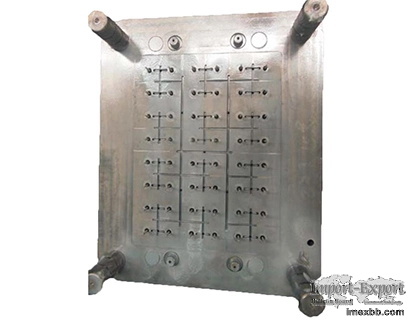 |
 |
Home > Offers to Sell > Health & Beauty > Other Medicine > Others
| Contact: | welinktech |
|---|---|
| Company: | WENZHOU WELINK MEDICAL INSTRUMENT CO.,LTD |
| Room 503,Building 5, Yayuyuan, No.408, Shangdoumen Road,Binjiang Sub-district, Lucheng, Wenzhou | |
| Zhejiang 325000 | |
| China | |
| Phone: | 0577-88919099 |
| E-Mail: | |
| Date/Time: | 8/22/23 7:34 GMT |
CONNECTOR MOLD (LUER SLIP AND LUER LOCK TYPE)
A connector mold, also known as a connector tooling, is a type of injection mold
that is specifically designed to produce connectors or cable assembly components.
Connectors are widely used in different industries, such as telecommunications,
automotive, consumer electronics, and many others, so connector molds are in high
demand.
Connector molds can range in complexity from simple single cavity molds to complex
multi-cavity molds to produce multiple parts at once. Some molds may feature
specialty inserts, such as inserts for over-molding, in-mold labels, or other
functional features. There are many different types and sizes of connector molds
to accommodate different connector designs and production quantities.
HOW IS A CONNECTOR MOLD MADE?
Connector molds are typically made through a process called injection molding.
This process involves the following steps:
Mold design: The first step in making a connector mold involves designing the mold
according to the specifications of the connector being manufactured. This includes
determining the shape, size, and other attributes of the mold.
Material selection: Once the mold is designed, the appropriate material for the
mold is selected. Connector molds are typically made of high-grade steel or
aluminum.
Mold creation: After the material is selected, the mold is created through a
series of machining and fabrication processes, including milling, drilling, and
cutting.
Injection molding: Once the mold is created, it is loaded into an injection
molding machine. The machine melts the raw materials, which are then injected into
the mold cavity through a nozzle.
Cool and solidify: As soon as the material is injected into the mold, the mold is
cooled and solidified. This process is crucial in ensuring that the finished
connector has the desired shape, size, and other attributes.
Eject the connector: Once the material has completely solidified, the connector is
ejected from the mold using a special ejector pin system.
Finishing: Finally, the connector is subjected to further treatment, such as
surface finishing, painting, or polishing, to enhance its appearance and
functionality.
CAN A CONNECTOR MOLD BE REUSED?
Yes, a connector mold can be reused multiple times. Connector molds are designed
to withstand multiple injection molding cycles, and it is common for a single mold
to produce thousands or even millions of connectors over its lifetime. However,
the lifespan of a connector mold may vary depending on a number of factors,
including the materials used in the mold, the injection molding process, and the
maintenance and cleaning practices implemented by the manufacturer.
Regular maintenance and cleaning of connector molds can help ensure consistent
quality and reliability of the connectors produced. By reusing molds,
manufacturers can save time and cost in the production process while still
producing high-quality products.
If you are looking for a reliable medical molding supplier, please contact us, and
we will be your best partner.
Minimum Order: 1 sets
SOURCE: Import-Export Bulletin Board (https://www.imexbb.com/)
Similar Products:Not exactly what you are looking for? Post an Offer to Buy!
![]()
© 1996-2010 IMEXBB.com. All rights reserved.
|
|
|






